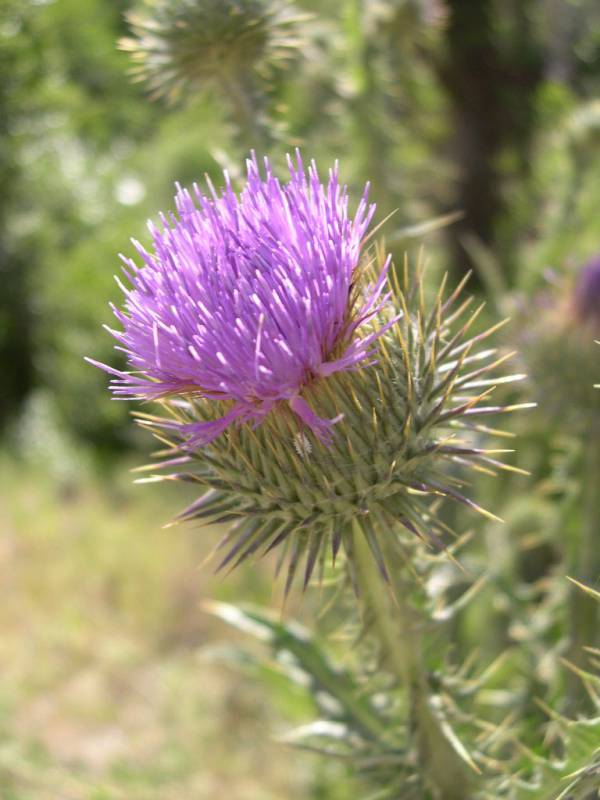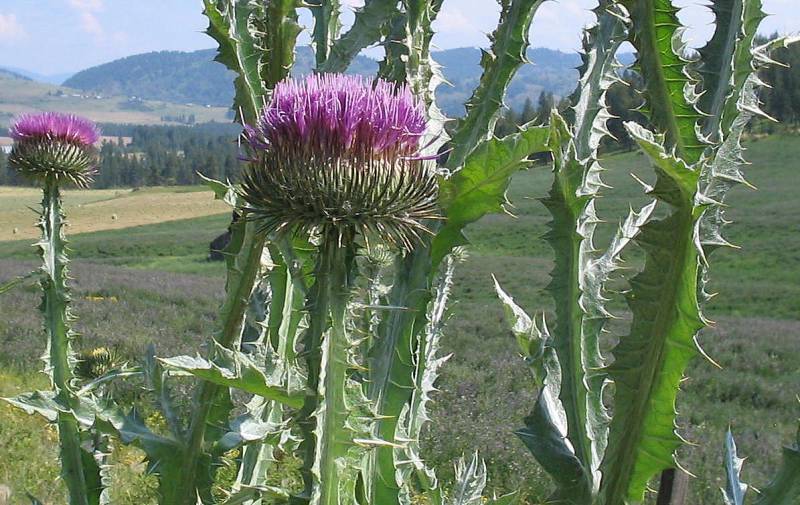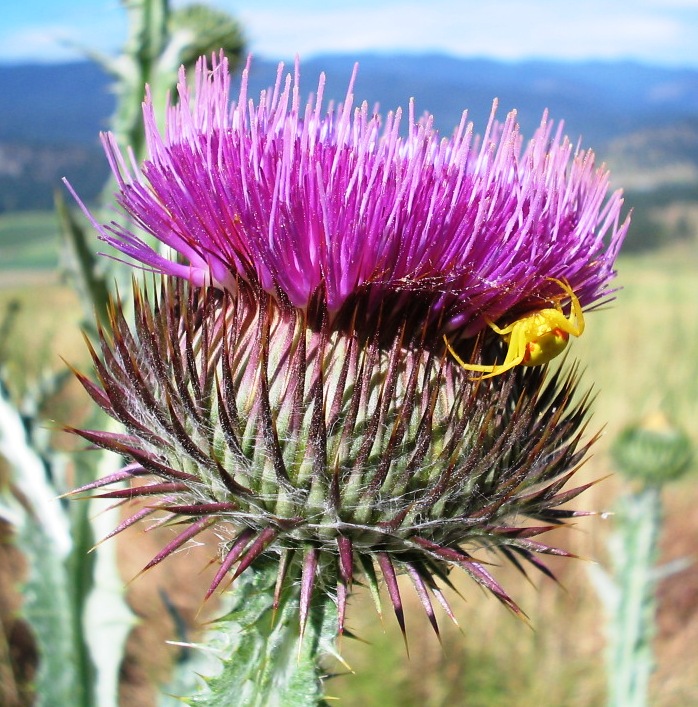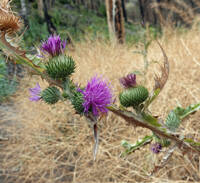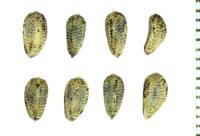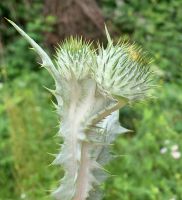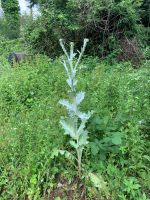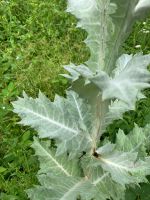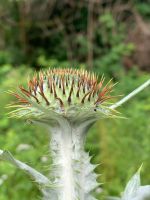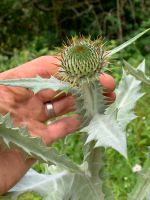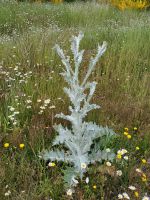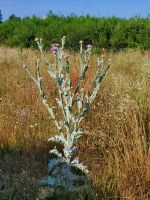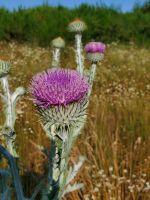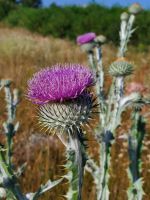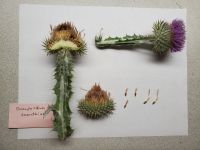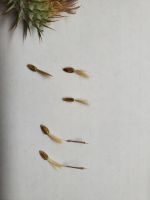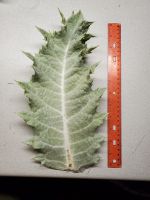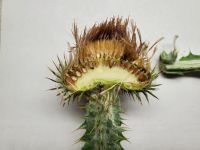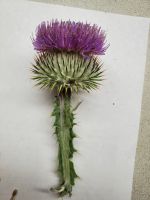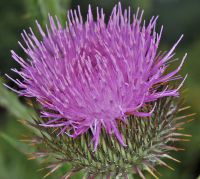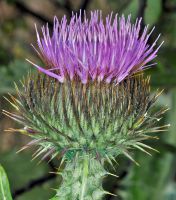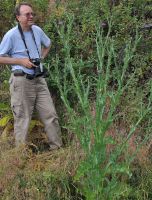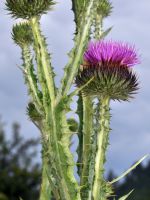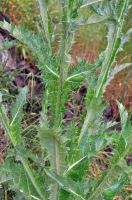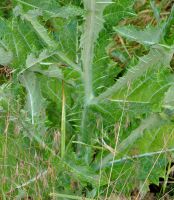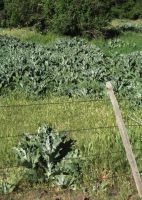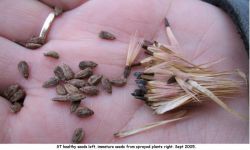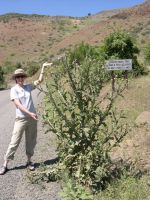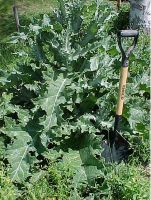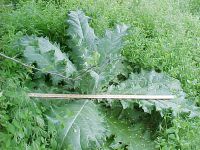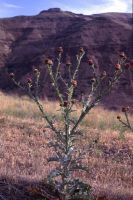Distribution: Occurring chiefly east of the Cascades crest and in the Columbia River Gorge in Washington; British Columbia to California, east across most of North America to the Atlantic Coast.
Habitat: Noxious weed of dry, open areas and stream banks.
Flowers: June-August
Origin: Introduced from Eurasia
Growth Duration: Biennial
Conservation Status: Not of concern
Pollination: Bees, flies, beetles, wasps
Coarse, branching, strongly spiny biennial up to 2.5 m. tall, with a broadly winged stem, the herbage sparsely to densely white-woolly.
Leaves toothed or slightly lobed, sessile or the lower short-petiolate, the blade up to 6 dm. long and 3 dm. wide, smaller upward.
Heads numerous, 2.5-5 cm. wide; involucral bracts all spine-tipped; corollas all tubular, violet to reddish; receptacle flat, fleshy and honeycombed, not densely bristly like Cirsium; pappus of barbellate bristles.
Achenes 4-5 mm. long, tipped with slender bristles.
Publication: Sp. Pl. 2: 827. 1753.
-
ssp. acanthium – cotton thistle
 Occurring chiefly east of the Cascades crest and in the Columbia River Gorge in Washington; British Columbia to California, east across most of North America to the Atlantic Coast.
Occurring chiefly east of the Cascades crest and in the Columbia River Gorge in Washington; British Columbia to California, east across most of North America to the Atlantic Coast.
PNW Herbaria: Specimen records of Onopordum acanthium in the Consortium of Pacific Northwest Herbaria database
WA Flora Checklist: Onopordum acanthium checklist entry
OregonFlora: Onopordum acanthium information
E-Flora BC: Onopordum acanthium atlas page
CalPhotos: Onopordum acanthium photos

